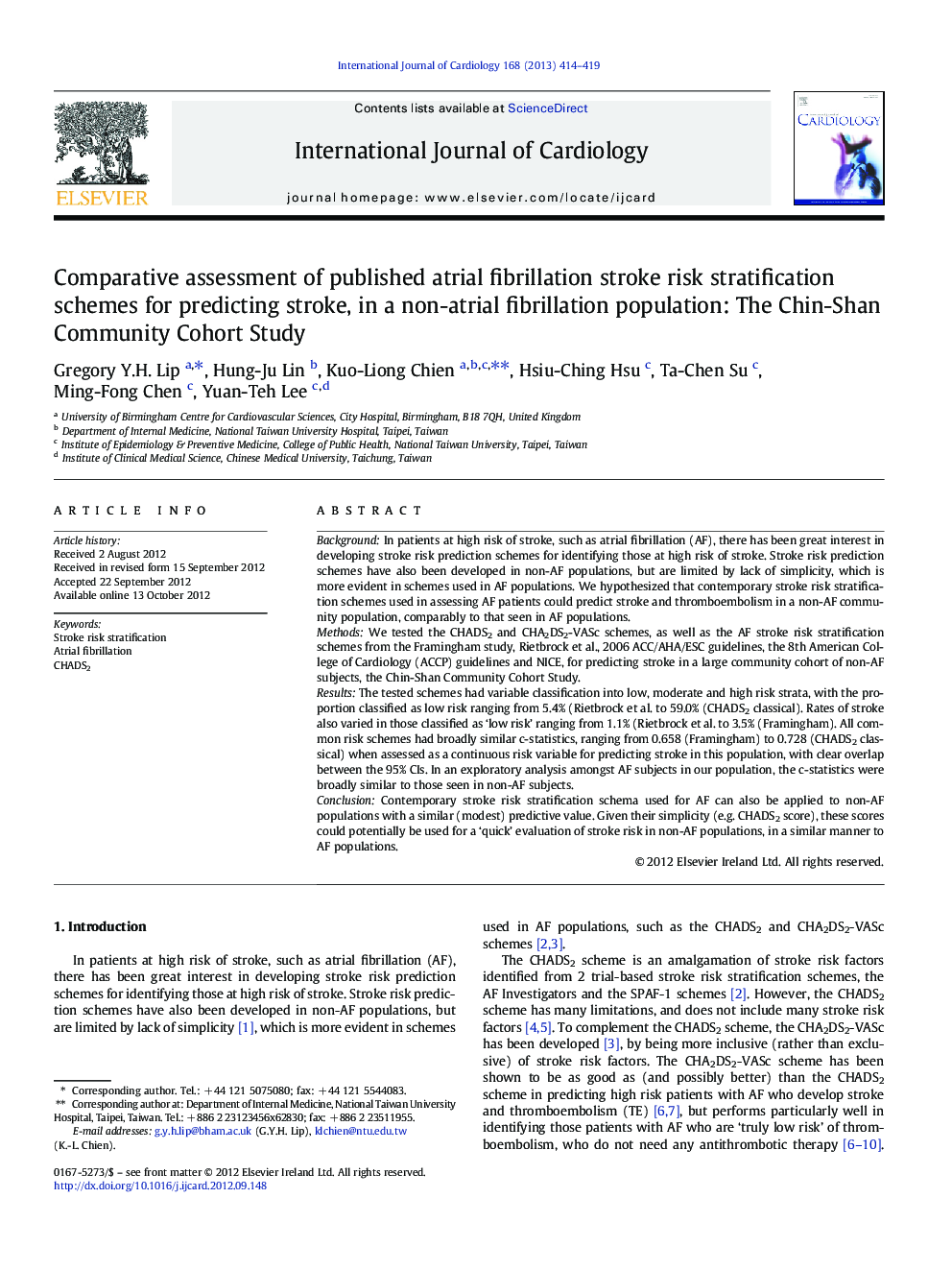| Article ID | Journal | Published Year | Pages | File Type |
|---|---|---|---|---|
| 5976713 | International Journal of Cardiology | 2013 | 6 Pages |
BackgroundIn patients at high risk of stroke, such as atrial fibrillation (AF), there has been great interest in developing stroke risk prediction schemes for identifying those at high risk of stroke. Stroke risk prediction schemes have also been developed in non-AF populations, but are limited by lack of simplicity, which is more evident in schemes used in AF populations. We hypothesized that contemporary stroke risk stratification schemes used in assessing AF patients could predict stroke and thromboembolism in a non-AF community population, comparably to that seen in AF populations.MethodsWe tested the CHADS2 and CHA2DS2-VASc schemes, as well as the AF stroke risk stratification schemes from the Framingham study, Rietbrock et al., 2006 ACC/AHA/ESC guidelines, the 8th American College of Cardiology (ACCP) guidelines and NICE, for predicting stroke in a large community cohort of non-AF subjects, the Chin-Shan Community Cohort Study.ResultsThe tested schemes had variable classification into low, moderate and high risk strata, with the proportion classified as low risk ranging from 5.4% (Rietbrock et al. to 59.0% (CHADS2 classical). Rates of stroke also varied in those classified as 'low risk' ranging from 1.1% (Rietbrock et al. to 3.5% (Framingham). All common risk schemes had broadly similar c-statistics, ranging from 0.658 (Framingham) to 0.728 (CHADS2 classical) when assessed as a continuous risk variable for predicting stroke in this population, with clear overlap between the 95% CIs. In an exploratory analysis amongst AF subjects in our population, the c-statistics were broadly similar to those seen in non-AF subjects.ConclusionContemporary stroke risk stratification schema used for AF can also be applied to non-AF populations with a similar (modest) predictive value. Given their simplicity (e.g. CHADS2 score), these scores could potentially be used for a 'quick' evaluation of stroke risk in non-AF populations, in a similar manner to AF populations.
